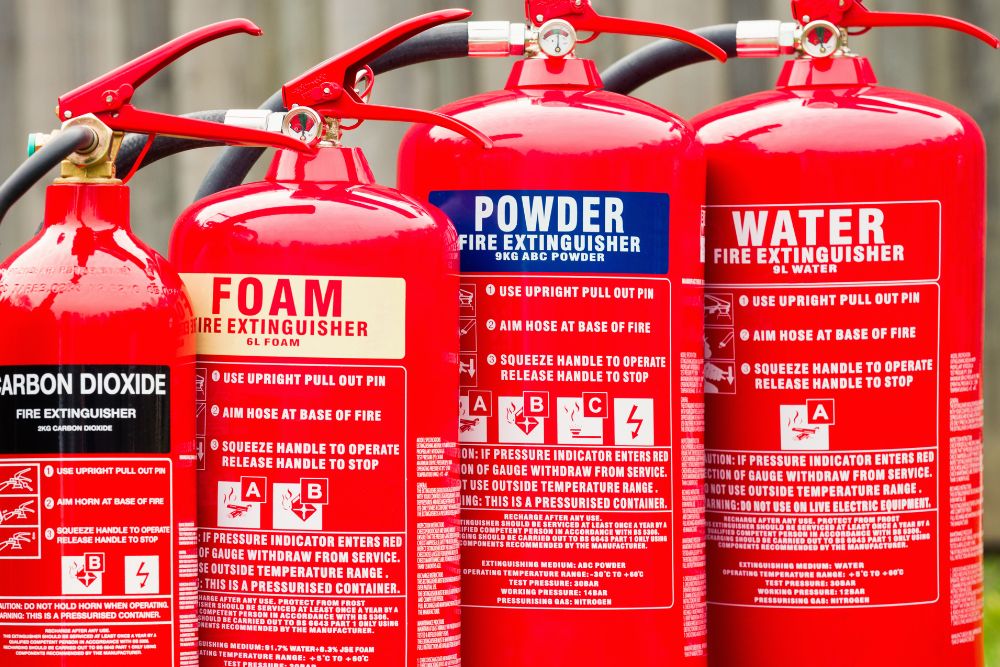
Fire safety in your home
August 13, 2025A house fire can start in seconds and change everything. It can destroy your belongings, damage your home, and – most importantly – put lives at risk. Many people think it will never happen to them, but fires in the home are more common than you might expect. The good news is that most can be prevented with a little extra care and awareness.
Smoke alarms – your early warning system
If there’s one thing every home should have, it’s a working smoke alarm on every floor. They’re inexpensive, quick to fit, and could give you the vital time you need to get everyone out safely. Make it a habit to test them once a month – pick a date you’ll remember – and replace batteries straight away if they’re running low.
Also remember that they will need full replacement every ten years or so – you can check the date on the base of the alarm.
And don’t forget that you will need a CO2 detector if you have any fuel-burning appliances, such as those using gas, oil, coal, or wood.
Staying safe in the kitchen
The kitchen is the heart of the home – and, unfortunately, the place where most house fires start. Hot oil, unattended pans, or a tea towel left too close to the hob can cause a fire in moments.
Stay in the kitchen while cooking, especially when frying or grilling, and keep flammable items well away from the heat. If a pan does catch fire, never throw water on it. If it’s safe, switch off the heat and cover the pan with a metal lid or fire blanket.
Electrical safety matters
We rely on electrical appliances every day, but they can be a hidden fire risk if they’re not looked after. Check cables and plugs for damage and stop using anything with frayed wires or scorch marks.
Don’t overload extension leads and unplug items when you’re not using them.
Clean tumble dryer and washing machine filters regularly – fluff and lint can overheat and ignite.
Cigarettes, candles, and open flames
If you smoke, try to do it outside. Indoors, use a deep ashtray and make sure every cigarette is completely out before you walk away.
Candles can create a lovely atmosphere, but always keep them on a stable, heat-proof surface and away from anything that could catch fire, like curtains or papers. Never leave them burning unattended.
Clear and safe escape routes
In an emergency, every second counts. Keep hallways, stairs, and doors clear so you can get out quickly.
It’s a good idea for everyone in your household to know at least two ways out of each room – and to practise your escape plan so it feels automatic if the worst happens.
Why fire doors matter
Fire doors are designed to hold back flames and smoke, giving you more time to escape. If you have them, make sure they shut properly and don’t wedge them open. In larger homes or multi-storey houses, installing fire doors can be a sensible investment (or a legal obligation if you are a landlord).
If you’re a landlord
Landlords have legal responsibilities when it comes to fire safety. By law, you must fit at least one working smoke alarm on every floor of the property, and a carbon monoxide alarm in any room with a solid fuel appliance.
These must be tested at the start of each tenancy.
Any furniture or furnishings you provide must meet fire resistance standards, and escape routes must be kept clear.
In houses in multiple occupation (HMOs), extra safety measures such as fire doors, alarms, and emergency lighting may be required. Skipping these steps doesn’t just risk a fine – it puts your tenants in danger.
Small steps, big difference
Fire safety isn’t just about rules and equipment – it’s about the little habits you build into everyday life:
- Test your smoke alarms regularly
- Watch what’s cooking
- Keep your appliances in good shape
- Treat candles and cigarettes with care
- Keep your escape routes clear
- Invest in fire blankets and extinguishers and make sure that everyone who lives at the property knows where they are and how to operate them.
By taking these small, simple steps, you’re not only protecting your home – you’re protecting the people and memories inside it. And that’s worth every bit of effort.
Further reading: Bonfire Night fire safety at home.
The information in this article is provided for general guidance on fire safety in the home and does not replace professional advice or legal requirements. Fire safety laws and regulations may change, and additional rules may apply depending on your location and type of property. Always follow the manufacturer’s instructions for any fire safety equipment and consult your local fire and rescue service or a qualified professional for specific advice.